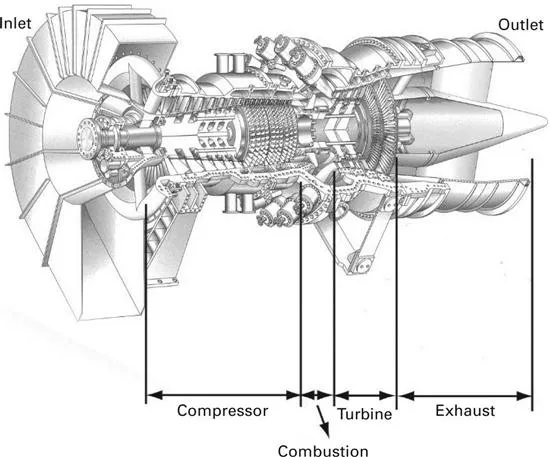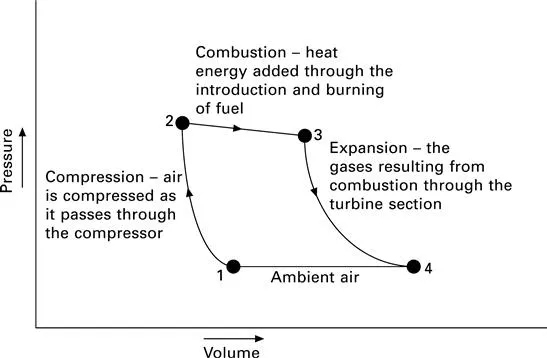
eBook - ePub
Structural Alloys for Power Plants
Operational Challenges and High-Temperature Materials
A. Shirzadi, S. Jackson, A. Shirzadi, S. Jackson
This is a test
Condividi libro
- 516 pagine
- English
- ePUB (disponibile sull'app)
- Disponibile su iOS e Android
eBook - ePub
Structural Alloys for Power Plants
Operational Challenges and High-Temperature Materials
A. Shirzadi, S. Jackson, A. Shirzadi, S. Jackson
Dettagli del libro
Anteprima del libro
Indice dei contenuti
Citazioni
Informazioni sul libro
Current fleets of conventional and nuclear power plants face increasing hostile environmental conditions due to increasingly high temperature operation for improved capacity and efficiency, and the need for long term service. Additional challenges are presented by the requirement to cycle plants to meet peak-load operation. This book presents a comprehensive review of structural materials in conventional and nuclear energy applications. Opening chapters address operational challenges and structural alloy requirements in different types of power plants. The following sections review power plant structural alloys and methods to mitigate critical materials degradation in power plants.
Domande frequenti
Come faccio ad annullare l'abbonamento?
È semplicissimo: basta accedere alla sezione Account nelle Impostazioni e cliccare su "Annulla abbonamento". Dopo la cancellazione, l'abbonamento rimarrà attivo per il periodo rimanente già pagato. Per maggiori informazioni, clicca qui
È possibile scaricare libri? Se sì, come?
Al momento è possibile scaricare tramite l'app tutti i nostri libri ePub mobile-friendly. Anche la maggior parte dei nostri PDF è scaricabile e stiamo lavorando per rendere disponibile quanto prima il download di tutti gli altri file. Per maggiori informazioni, clicca qui
Che differenza c'è tra i piani?
Entrambi i piani ti danno accesso illimitato alla libreria e a tutte le funzionalità di Perlego. Le uniche differenze sono il prezzo e il periodo di abbonamento: con il piano annuale risparmierai circa il 30% rispetto a 12 rate con quello mensile.
Cos'è Perlego?
Perlego è un servizio di abbonamento a testi accademici, che ti permette di accedere a un'intera libreria online a un prezzo inferiore rispetto a quello che pagheresti per acquistare un singolo libro al mese. Con oltre 1 milione di testi suddivisi in più di 1.000 categorie, troverai sicuramente ciò che fa per te! Per maggiori informazioni, clicca qui.
Perlego supporta la sintesi vocale?
Cerca l'icona Sintesi vocale nel prossimo libro che leggerai per verificare se è possibile riprodurre l'audio. Questo strumento permette di leggere il testo a voce alta, evidenziandolo man mano che la lettura procede. Puoi aumentare o diminuire la velocità della sintesi vocale, oppure sospendere la riproduzione. Per maggiori informazioni, clicca qui.
Structural Alloys for Power Plants è disponibile online in formato PDF/ePub?
Sì, puoi accedere a Structural Alloys for Power Plants di A. Shirzadi, S. Jackson, A. Shirzadi, S. Jackson in formato PDF e/o ePub, così come ad altri libri molto apprezzati nelle sezioni relative a Tecnología e ingeniería e Ingeniería mecánica. Scopri oltre 1 milione di libri disponibili nel nostro catalogo.
Informazioni
Argomento
Tecnología e ingenieríaCategoria
Ingeniería mecánicaPart I
Operational challenges and structural alloy requirements
Outline
1
Gas turbines: operating conditions, components and material requirements
A.W. James and S. Rajagopalan, Siemens Energy Inc., USA
Abstract:
This chapter provides a summary of the operating cycle of an industrial gas turbine and associated plant. The characteristics of the materials and integrated materials systems used in a gas turbine are considered. The conditions under which industrial gas turbines operate, and the impact these operating conditions have on materials behavior, are described. The materials selection criteria for individual components and component sections are discussed. The key material properties for designing critical components and the approach for conducting a life assessment are considered. The major limitations to the performance of current superalloys, coatings and steels and the challenges facing the introduction of new materials are discussed. An overview is given of current trends in materials development and future materials technologies.
Key words
gas turbine; materials; superalloys; steels; coatings; life assessment; blades; vanes; disks
1.1 Introduction
Industrial gas turbines play a major role in power generation, providing a clean, reliable and efficient means of producing electricity. Gas turbines have an advantage over many other forms of power generation equipment in that they are able to quickly provide power during times of peak demand. Unlike commercial aircraft engines which operate at peak power only during take-off and landing, industrial gas turbines may operate continuously at base load for many thousands of hours.
Industrial turbines are capable of operating at ambient temperatures well below freezing as well as temperatures as high as 45 °C. Although turbines are typically fired on natural gas, they may be configured to run on petroleumbased fuels, and synthetic gas derived from coal or biomass.
The major manufacturers of large industrial gas turbines (General Electric, Siemens, Alstom and Mitsubishi Heavy Industries) continue to develop new turbines with increasing power and thermal efficiencies. Each generation of turbine is assigned a letter designation relating primarily to the firing temperature. ‘H’ class turbines have thermal efficiencies of around 60%, and the world’s largest turbine (Siemens SGT5-8000H) has a power output of 340 MW (Ratliff et al., 2007). The recently released ‘J’ class turbine (MHI M501J) has a firing temperature of 1600 °C with a combined cycle efficiency exceeding 60%, and a power output of 320 MW (Hada et al., 2012).
1.1.1 Gas turbine overview
The gas turbine has three major sections, namely the compressor, combustor and turbine (although, from a materials perspective, the other major component groups – rotor, casing and auxiliaries – are also of interest). The compressor, combustor and turbine sections are highlighted in Fig. 1.1.

Ambient air enters the gas turbine at the compressor inlet. As the air passes through the sequential stages of compression (alternating rows of static airfoils known as compressor vanes or stators and rotating airfoils knows as compressor blades), both the pressure and the temperature increase as work is performed to decrease the volume of the air. The compressed air now passes into the combustion section where the air is further heated with the introduction and burning of fuel. In the combustor there is an increase in volume, but the pressure remains relatively constant. The gas produced during combustion is expanded through the turbine section (the turbine is similar to the compressor in that is consists of alternating rows of static vanes and rotating blades). The expanding gas performs work as it causes the turbine blades to rotate. This rotation drives the compressor and an external generator. Finally the combusted gas exits the turbine via the exhaust duct. This cycle is represented by the pressure–volume diagram in Fig. 1.2.

1.1.2 Power plant overview
Industrial gas turbines for power generation are operated in either simple cycle, where the gas turbine alone is used to drive the generator, or in combined cycle where the gas turbine generates power in combination with a steam turbine. Combined cycle power plants are more efficient than either simple cycle gas turbine plants or steam turbine plants operating without a gas turbine.
In simple cycle operation the exhaust gases from the gas turbine exit the exhaust duct to atmosphere, whereas in combined cycle the exhaust gas is fed into a heat recovery steam generator (HRSG). As the name suggests, the HRSG recovers heat from the exhaust gas of the gas turbine and uses this heat to generate steam to power a steam turbine.
Modern combined cycle power plants are capable of achieving efficiencies in excess of 60%. Although gas turbines operating in simple cycle are less efficient, with thermal efficiencies between 35 and 45%, they have greater operational flexibility, including shorter start times (achieving full power in as little as 10 minutes), load following (ability to increase or decrease power output as the demand for electricity changes) and cyclic capabilities (typically operating only during periods of peak demand, often starting to meet peak demand, and then shutting down as demand decreases, e.g. overnight). Gas turbines operating in simple cycle are favored for their ability to provide power during periods of high demand (peakers) and more recently for balancing power demand with renewable energy sources, e.g. solar and wind power.
The final critical component of a power plant is the generator which converts the rotational mechanical energy provided by the gas and steam turbines into electrical energy. As the output frequency of the generator depends upon the number of poles and the rotational speed, gas turbines are designed and operated with specific rotational speeds. In North America where the power grid operates at a frequency of 60 Hz, large gas turbines typically operate with a shaft speed of 3600 RPM. In Europe the gas turbine typically operates with a shaft speed of 3000 RPM to generate electricity with a frequency of 50 Hz. Smaller gas turbines may operate at higher speeds and rely upon a gearbox to reduce the shaft speed of the generator.
Although natural gas is typically used to fire gas turbines, they may also operate on alternative petroleum and synthetic fuels. Given the relatively large coal reserves in the USA, and the drive towards cleaner power generation, there is currently some interest in the use of synthetic gas manufactured from coal as a gas turbine fuel. The integrated gasification combined cycle (IGCC) converts coal into synthetic gas, commonly known as syngas. Undesirable impurities such as carbon dioxide can be removed from the syngas before it is burnt. This approach supports carbon capture and sequestration (CCS). High initial plant cost is a major hurdle to the widespread introduction of IGCC plants. The power island (gas turbine, steam turbine and generator) represent only about 10–20% of the total cost of an IGCC plant.
1.2 Overview of materials systems and their role in gas turbines
Materials and materials systems play a central role in the function of the gas turbine, and appropriate materials choices are essential to maximizing gas turbine efficiency and operational longevity. The compressor section of the gas turbine is predominantly manufactured from ferrous alloys, namely steels and nodular irons. The temperature within the compressor increases from ambient at the inlet to nearly 600 °C in the final stages towards the compressor exit. Materials used for the blades and vanes in the rear compressor stages must have adequate high temperature strength and oxidation resistance to withstand these conditions. Other important material property requirements include good corrosion resistance and high cycle fatigue strength. Stainless steels are the preferred materials for compressor blades and vanes. Examples of the prominently used grades include 17-4 PH (a precipitation hardenable grade) and 400 series martensitic stainless steels. Where additional protection against corrosion is required, coatings (such as alumina) may be applied.
The compressor external flow path is defined by the casing. While the casing for the inlet portion of the compressor is typically made of either carbon steel or nodular iron, the remainder of the compressor casing is usually made of a low alloy steel. Stainless steels maybe used towards the rear end of the compressor, where the temperatures are too high for low alloy steel. Combustion and turbine casings operate at higher temperatures than the compressor. The casings materials for the turbine and combustor are frequently manufactured from heat-resistant steels: alloy steels such as 2.25%Cr steel or stainless steels such as 400 series martensitic stainless steels.
The rotor is a critical component, extending from the front of the compressor to the rear of the turbine section carrying both the compressor and turbine blades. The rotor consists of a series of disks that either are bolted or welded together to form the rotor or affixed to a central shaft. The rotor disks experience significant cent...